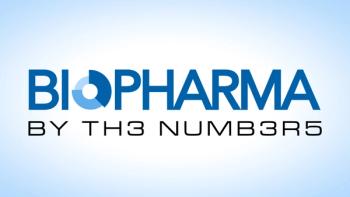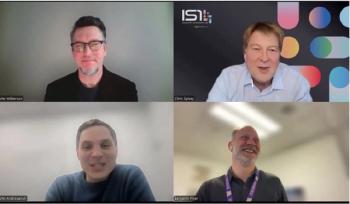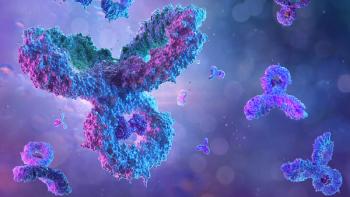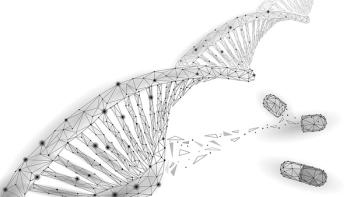
- BioPharm International May 2025
- Volume 38
- Issue 4
- Pages: 9–11
The Challenge of Market Uptake for Biosimilars
As more originator biologics lose patent exclusivity in the next decade, a healthy biosimilars pipeline is necessary but requires market support.
Approvals of biosimilars in the United States have ramped in the past decade as they are anticipated to offer cost-effective alternatives to originator biologics that lose their patent exclusivity. To date, a number of biosimilars have been approved in the US covering a variety of therapeutic areas, such as endocrinology, immunology, oncology, ophthalmology, and support care. Yet, despite market approvals, the biopharmaceutical industry has seen a slower-than-expected market uptake due to challenges such as increased level of competition and an interplay of factors in a complicated US healthcare system.
Thomas Nusbickel, chief commercial officer, Celltrion USA, a subsidiary of South Korea-based Celltrion, points to two biosimilar approvals the company received from FDA in 2024 and 2025, one of which was launched onto the US market in March 2025, and the other with the potential to launch later in the year. The 2024 FDA approval was ustekinumab-stba (brand name STEQEYMA), a biosimilar to ustekinumab (brand name STELARA), which the company launched in the US following its December 2024 approval (1). The 2025 FDA approval was omalizumab-igec (brand name Omlyclo), which was approved on March 7, 2025 as being interchangeable with omalizumab (brand name Xolair) (2).
“Each biosimilar has its own unique market dynamics and challenges. One key area of focus is making sure there is as broad access to the product as possible by securing managed care wins and preferred positions as they become available. In a more crowded market [such as] ustekinumab, with seven FDA approved biosimilars, the challenge becomes more acute,” Nusbickel says.
He goes on to explain that the adalimumab biosimilars faced a similar level of competitive intensity when they came onto the market; what’s more, payers at the time were not as receptive as today in removing reference products from formulary right away. “We anticipate the ustekinumab market will be more competitive than the adalimumab biosimilar market,” Nusbickel notes.
“Biosimilars have been in the US market for 10 years, with 73 FDA-approved biosimilars (3) and 49 launched as of March 2025 (4),” says Thomas Newcomer, vice-president and head of Market Access, US, at Samsung Bioepis. “Since the first biosimilar entry, biosimilars have generated $36 billion in savings for the US healthcare system (5), and there is still much room for improvement, for wider access and greater savings.”
Newcomer emphasizes that 2023 saw the biggest loss of exclusivity in history as biosimilar competition began at that time for adalimumab. After two years, however, penetration remains at 23%, with most gains driven by private-label products (6). “In early 2025, several biosimilars entered the ustekinumab market, and we will have to wait and see how the market evolves,” he remarks.
For the biosimilar market to survive in long-term, Newcomer asserts that there needs to be real progress in broad biosimilar uptake, not just the limited success seen to date in the private-label category. “There is an ongoing acknowledgement of the large financial spend experienced in categories where biosimilars are currently available, and we hope to see a step towards real change, which is to have less expensive, cost-effective biosimilars placed in a priority preferred position for physicians and patients. We need to see greater biosimilar utilization in the US to ensure a viable biosimilar market in the future, which ultimately lowers costs to the healthcare system and to the patient,” he explains.
Slower-than-anticipated market adoption
As the biopharma industry has observed, market uptake of approved biosimilars has been slower than expected. Newcomer does clarify, however, that the rate of biosimilar uptake varies across different therapeutic areas and molecules, explaining that the oncology class, including supportive care products, has seen faster acceptance of biosimilars compared to other therapeutic areas.
“Some oncology classes have even seen [more than] 80% biosimilar utilization within the first three years (7). For the infliximab class, the rate of adoption was very slow in the beginning, but now we are starting to see some progress and more routine use of biosimilars (6),” Newcomer says.
Meanwhile, Nusbickel points out that a decade has passed since the first biosimilar was approved for the US market by FDA. “On the one hand, we’ve seen significant progress, such as increased provider and patient comfort with biosimilars, but on the other hand, challenges remain,” he says. “This affects the economic incentives to use biosimilars, sometimes in a negative way. Additionally, some reference manufacturers have leveraged the patent legal system to their advantage to stall biosimilar competition from entering the market.”
Nusbickel notes, however, that the industry is seeing progress in overcoming some of the addressable historical challenges that have previously slowed biosimilar adoption, such as earlier receptivity to making biosimilars preferred on formularies, as demonstrated with ustekinumab biosimilars. “We are encouraged by the growing prioritization of biosimilars in managed care formulary design and believe that, alongside continued provider and patient engagement, this can drive adoption while ensuring high-quality care,” he anticipates.
“The journey towards enhanced biosimilar uptake in the US is a multifaceted one, characterized by variations across therapeutic areas and products,” Newcomer adds. He explains that, while cost and competition undoubtedly impact market acceptance, there is an interplay of factors—such as independent medical guidelines, treatment duration, and prescribers’ comfort level with biosimilars (which can vary across different therapeutic areas) as well as access and reimbursement dynamics—that all work to create a complex landscape.
“Recognizing and understanding these determinants is essential for stakeholders as they navigate the evolving biosimilar landscape, ultimately striving to optimize patient care while promoting cost-efficiency in the US healthcare system (7),” Newcomer states.
Markets with significant potential
In looking at which therapeutic markets hold the most significant potential for biosimilars, Nusbickel emphasizes that a goal of biosimilars is to increase patient access to existing, important biologic therapies.
“So far, almost every molecule where biosimilars have been launched has resulted in an increase in the overall use of those molecules,” Nusbickel says. According to the Association for Accessible Medicines (AAM) 2024 annual savings report, since 2015, biosimilar competition has led to more than 495 million incremental days of patient therapy that would not have occurred without biosimilar competition, while generating $36 billion in savings (3), Nusbickel points out. “That is strong validation that biosimilars have potential to positively impact any therapeutic market,” he says.
Meanwhile, Newcomer brings up rare diseases as potentially new market where biosimilars may make an impact. Therapies for rare diseases can be costly for the healthcare system as these markets typically have a limited number of patients. “A biosimilar manufacturer would need to invest hundreds of millions of dollars to bring a biosimilar to market to compete with the originator. Then you have to determine if prescribers in a rare disease therapeutic area would switch or start enough patients on the biosimilar to recoup the investment of the manufacturer in that rare disease. In addition, would the payers be willing to prefer the biosimilar at a cost savings over the originator? We have seen limited investment to date in rare disease biosimilars despite the opportunity to greatly reduce healthcare spend in those therapeutic areas,” Newcomer observes.
The main challenge to market entry in new therapeutic markets or those with high market potential is ensuring that the biosimilar market is sustainable, Nusbickel cautions. “That means continuing to streamline and preserve the rigorous regulatory process, re-evaluating US-only requirements such as interchangeability through additional clinical requirements, continuing to evolve formulary coverage dynamics to incent biosimilar use, and always promoting sustainable reimbursement policy. For companies to continue developing biosimilars and entering the market, the market has to have a solid future,” he states.
Next big wave
In anticipating the next big wave of biosimilar products on the market, Newcomer says the industry expects to see additional options for treatments for ophthalmic, endocrinology, and osteoporosis diseases in the near term, following the launch of biosimilars in the ustekinumab category (first entrant in January 2025 followed by several other entrants in February).
“We also have to take a look at the critical, imminent issue facing the biologics industry; 90% of biologics face loss of exclusivity within 10 years and yet have no biosimilars in development.This is an issue not just limited to the biosimilars industry; it’s relevant to the entire biologics industry, because biosimilars are the pressure valve that create headroom for development and use of the next-generation innovative medicines. Together with novel therapies, biosimilars form the ‘Virtuous Cycle’ of medicines that enable competition by ensuring better economic access to these medicines,” Newcomer says.
Newcomer also emphasizes how imperative it is that a market exists that enables fair competition for biosimilars, with some level of commercial certainty to the US healthcare system. “There is an enormous need for a thriving biosimilar market in the US because the US is the single biggest biologics market in the world for originators and the home for much of the global biotech investment. For developers to continue to evaluate the investment required to bring out future products in high-cost drug categories, there has to be a level of confidence that the market will support the lower-cost biosimilars when they are approved years down the line,” he explains.
Biosimilars exist because reference biologics pave the way with new breakthroughs and effective therapies, Nusbickel notes. “Looking to the future, we will see another wave of significant oncology biosimilar launches like we did about five to seven years ago with rituximab, trastuzumab, and bevacizumab. This next wave will include blockbusters such as Keytruda (pembrolizumab) and Opdivo (ipilimumab). Additionally, we hope to see some more movement in therapeutic areas that have historically had less biosimilars launches such as multiple sclerosis (MS),” he adds.
References
- Celltrion. STEQEYMA (ustekinumab-stba), a Biosimilar to STELARA (ustekinumab), Now Available in the United States. Press Release. March 12, 2025.
- FDA. Letter of Approval: BLA 761399. fda.gov, March 7, 2025.
- FDA. Biosimilar Product Information. fda.gov (accessed April 7, 2025).
- Samsung Bioepis. Company data on file (accessed April 7, 2025).
- Association for Accessible Medicines. 2024 US Generic & Biosimilar Medicines Savings Report. Market Research Report. Sept. 5, 2024.
- Samsung Bioepis. Samsung Bioepis Releases First Quarter 2025 US Biosimilar Market Report. Press Release. Jan. 16, 2025.
- Samsung Bioepis. Biosimilar Market Report 3rd Edition, Q4 2023. Market Research Report. September 2023.
About the author
Feliza Mirasol is an editor with BioPharm International®.
Article details
BioPharm International®
Vol. 38, No. 4
May 2025
Pages: 9-11
Citation
When referring to this article, please cite it as Mirasol, F. The Challenge of Market Uptake for Biosimilars. BioPharm International 2025 38 (4).
Articles in this issue
7 months ago
Complying with European versus US GMPsNewsletter
Stay at the forefront of biopharmaceutical innovation—subscribe to BioPharm International for expert insights on drug development, manufacturing, compliance, and more.





